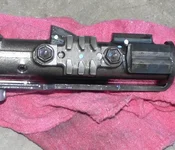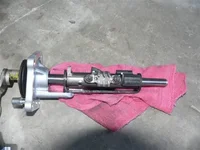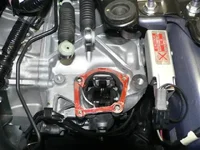if you..
...........First i'm talking about piece of metal that is welded onto the shifter that connects the linkage. Could you extend or shorten to create a shorter throw heres is what i'm talking about. And just cut the actualy shifter shaft down.

Second i really hate that reverse lock out mechanism. could you just cut out that piece of plastic which is stopping the small piece of metal from sliding all the way over. Its the piece that has the lub on it.

...........First i'm talking about piece of metal that is welded onto the shifter that connects the linkage. Could you extend or shorten to create a shorter throw heres is what i'm talking about. And just cut the actualy shifter shaft down.

Second i really hate that reverse lock out mechanism. could you just cut out that piece of plastic which is stopping the small piece of metal from sliding all the way over. Its the piece that has the lub on it.




